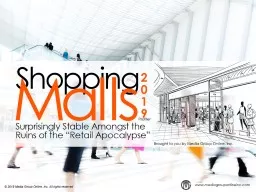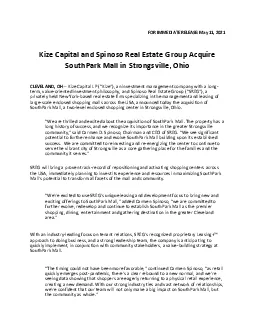PPT-A Strong Shopping Mall Market Requires a Strong Economy
Author : patchick | Published Date : 2020-06-22
From a comprehensive perspective the shopping mall market remains relatively strong because consumer spendingretail sales increased 34 YOY for the first half of
Presentation Embed Code
Download Presentation
Download Presentation The PPT/PDF document "A Strong Shopping Mall Market Requires a..." is the property of its rightful owner. Permission is granted to download and print the materials on this website for personal, non-commercial use only, and to display it on your personal computer provided you do not modify the materials and that you retain all copyright notices contained in the materials. By downloading content from our website, you accept the terms of this agreement.
A Strong Shopping Mall Market Requires a Strong Economy: Transcript
Download Rules Of Document
"A Strong Shopping Mall Market Requires a Strong Economy"The content belongs to its owner. You may download and print it for personal use, without modification, and keep all copyright notices. By downloading, you agree to these terms.
Related Documents














